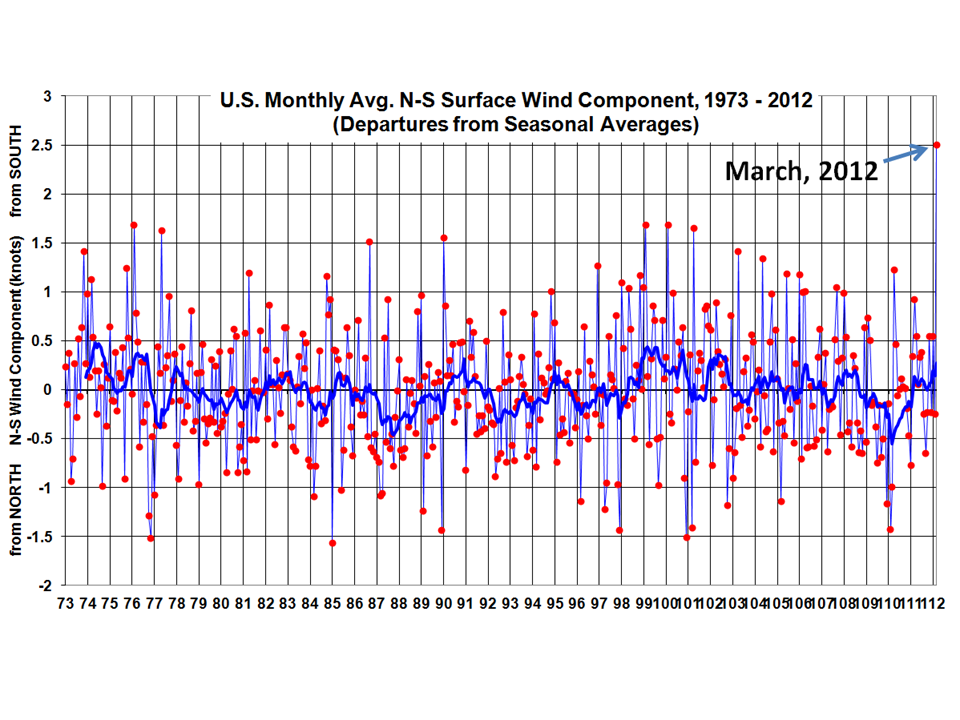As part of my exploration of different surface temperature datasets, I’m examining the relationship between average U.S. temperatures and other weather variables in NOAA’s Integrated Surface Hourly (ISH) dataset. (I think I might have mistakenly called it “International” before, instead of “Integrated” Surface Hourly).
Anyway , one of the things that popped out of my analysis is related to our record warm March this year (2012). Connecting such an event to “global warming” would require either lazy thinking, jumping to conclusions, or evidence that the warmth was not caused by persistent southerly flow over an unusually large area for that time of year.
The U.S. is a pretty small place (about 2% of the Earth), and so a single high or low pressure area can cover most of the country. For example, if unusually persistent southerly flow sets up all month over most of the country, there will be unusual warmth. In that case we are talking about “weather”, not “climate change”.
Why do I say that? Because one of the basic concepts you learn in meteorology is “mass continuity”. If there is persistent and widespread southerly flow over the U.S., there must be (by mass continuity) the same amount of northerly flow elsewhere at the same latitude.
That means that our unusual warmth is matched by unusual coolness someplace else.
Well, guess what? It turns out that our record warm March was ALSO a record for southerly flow, averaged over the U.S. This is shown in the next plot, which comes from about 250 weather stations distributed across the Lower 48 (click for large version; heavy line is trailing 12 month average):

Weather records are broken on occasion, even without global warming. And here we see evidence that our March warmth was simply a chance fluctuation in weather patterns.
If you claim, “Well, maybe global warming caused the extra southerly flow!”, you then are also claiming (through mass continuity) that global warming ALSO caused extra northerly flow (with below normal temperatures) somewhere else.
And no matter what anyone has told you, global warming cannot cause colder than normal weather. It’s not in the physics. The fact that warming has been greatest in the Arctic means that the equator-to-pole temperature contrast has been reduced, which would mean less storminess and less North-South exchange of air masses — not more.

 Home/Blog
Home/Blog




The global mean temperature in 2022 is currently estimated to be about 1.15 [1.02 to 1.28] C above the 1850-1900 pre-industrial average. lake havasu luxury vacation rentals